LaTeX templates and examples — Astronomy & Astrophysics
Seneste
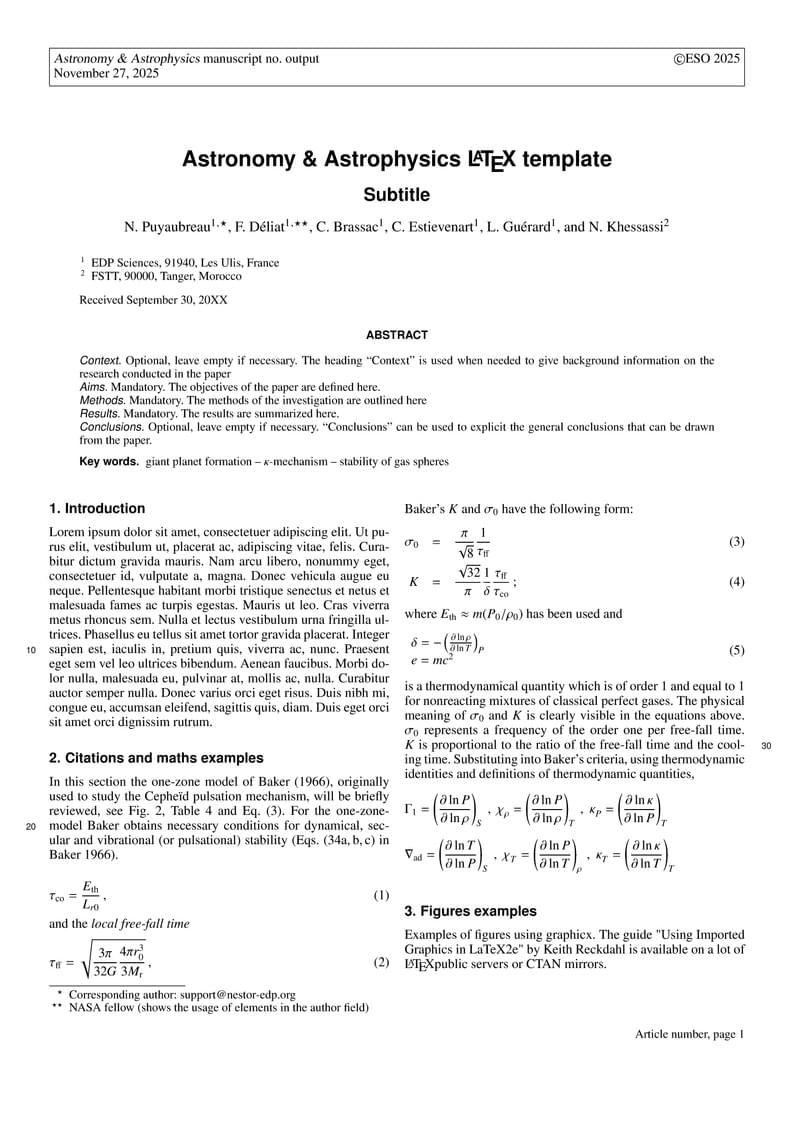
A&A LaTeX macro package v9.3 downloaded from https://www.aanda.org/for-authors 9.3 October 2025 - Behaviour of the [longauth] command is modified to shift the whole author list and affiliations after references.
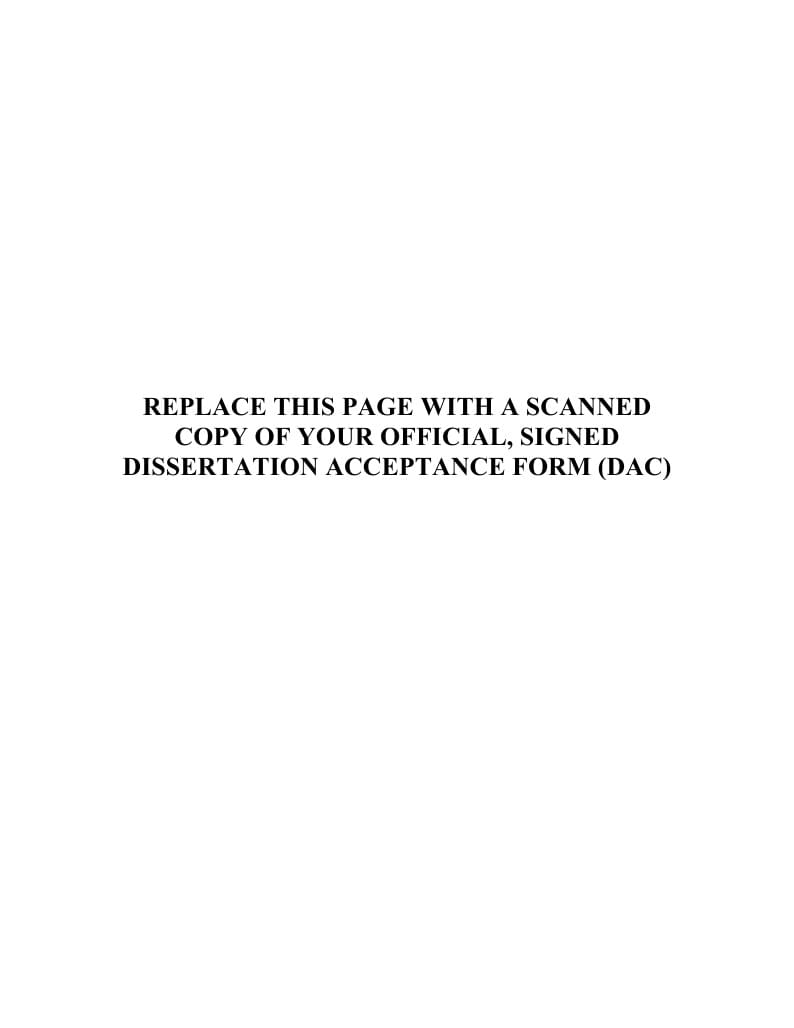
Harvard University PhD Thesis Template Default settings for Department of Astronomy, but customizable for any GSAS department
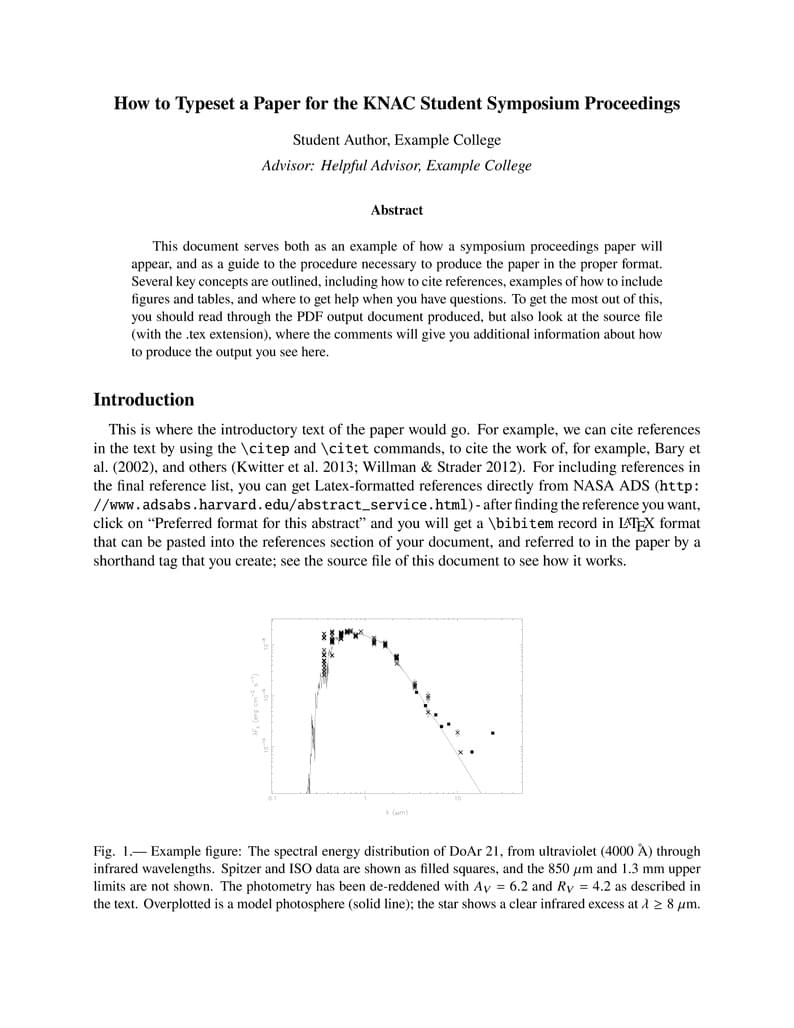
A template for submission to the proceedings for the Summer Student Research Symposium of the Keck North East Astronomy Consortium (KNAC) program. We used to be an REU, now internally funded by member institutions, the symposium is open to all undergraduates doing astronomy related research either at any of the KNAC locations, or who are from a KNAC institution. Based largely on AASTeX format. Last updated Summer 2024 - changes year to year are usually very minor.
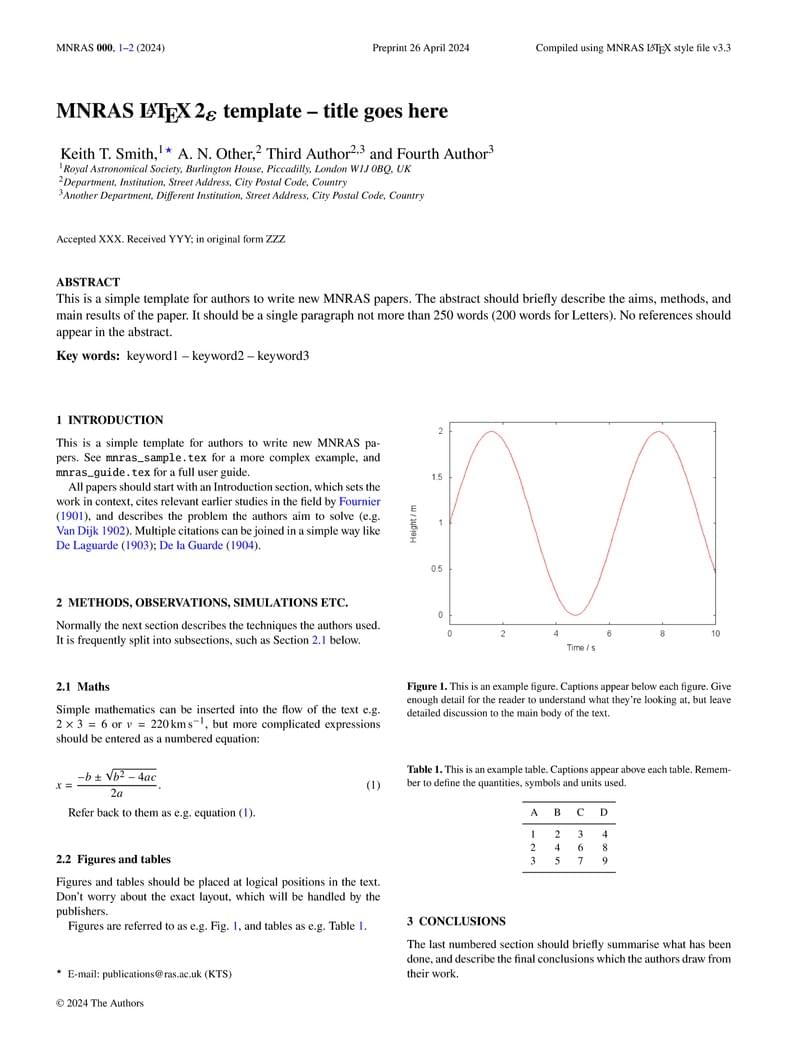
This is a template and guide for preparing papers for Monthly Notices of the Royal Astronomical Society using the 'mnras' LaTeX package. See the mnras_template.tex file (included and used by default when opening the template) for a simple template to help you get started. The mnras_guide.tex file (also included) provides instructions for using the additional features in the document class. This is not a general guide on how to use LaTeX, and nor does it replace the journal's instructions to authors.

The American Astronomical Society (AAS) has developed a markup package to assist authors in preparing manuscripts intended for submission to all the AAS-affiliated journals. The journals are the Astrophysical Journal (ApJ), the Astronomical Journal (AJ), ApJ Supplements (ApJS), Letters (ApJL), The Planetary Science Journal (PSJ), and Research Notes of the American Astronomical society (RNAAS). The latest LaTeX classfile is AASTeX v7.0.1 and it can be obtained here. This is a bug fix for v7. The sample701.tex template uses this classfile to illustrate some of the newer features for submissions to the main Journals. Authors should consult the extensive guide for all the features in AASTeX v7+ Once your manuscript is complete, check the AAS journals pre-submission checklist to make sure you're ready to submit. Then use the "Submit to Journal" option in the Overleaf editor to submit your files directly to the journal for processing. Note that you will still need to log on to the submission site to supply additional meta-data. The transfer to the peer review site can take some time so please be patient. The editorial office will contact you when your submission has been processed and is ready for the final meta-data input. If you're new to LaTeX, check out our free online introduction to help you get started, or please get in touch if you have any questions.
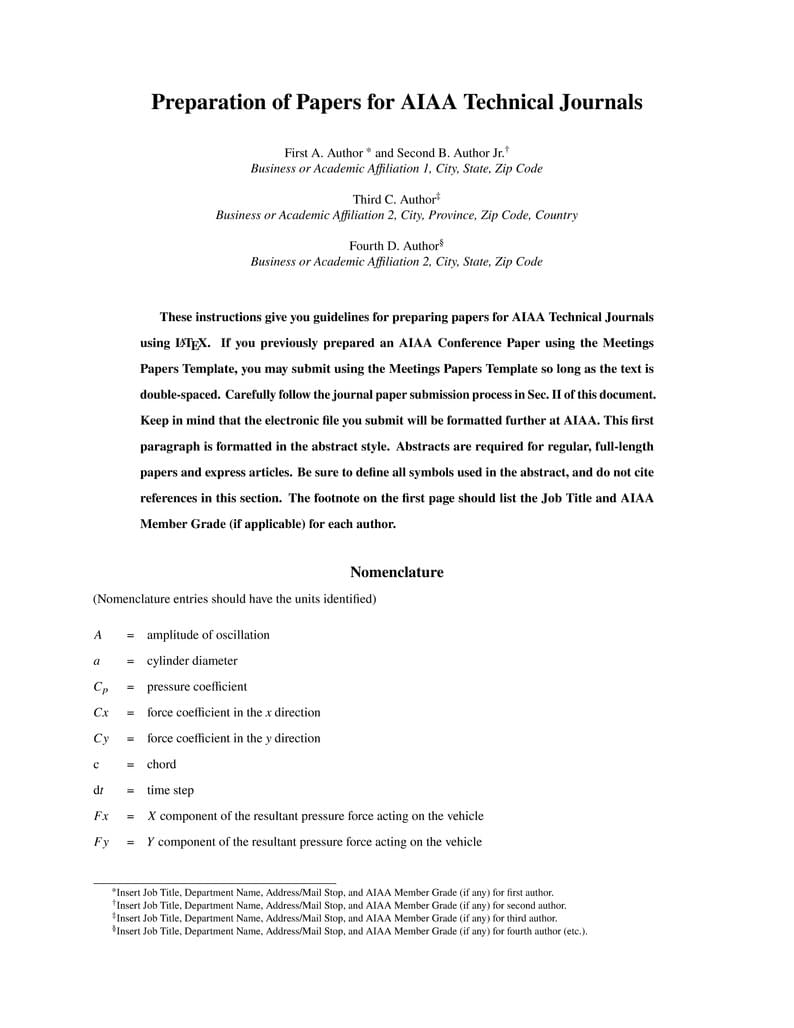
These instructions provide guidelines for preparing papers for AIAA Technical Journals using LaTeX. You may also use it for preparing papers for AIAA conferences by toggling the documentclass option in the template. AIAA journals provide a panoramic journey from yesterday’s challenges through today's most important aerospace advances in research and development.AIAA’s original research papers present concepts, methods of analysis, technical knowledge, exploratory developments, and new applications. To begin writing online (in your browser), simply click the Open as Template button, above. Additional guidelines for preparing your submission are included within the template itself. If you'd like to download any of the template files including the .cls file, please click "Open as template" above, then download the template “Source” zip file from the menu. This template is designed for submissions to all current AIAA journals: AIAA Journal Journal of Aerospace Information Systems Journal of Aircraft Journal of Air Transportation Journal of Guidance, Control and Dynamics Journal of Propulsion and Power Journal of Spacecraft and Rockets Journal of Thermophysics and Heat Transfer If you're new to Overleaf and LaTeX, check out our free introductory course for help getting started.
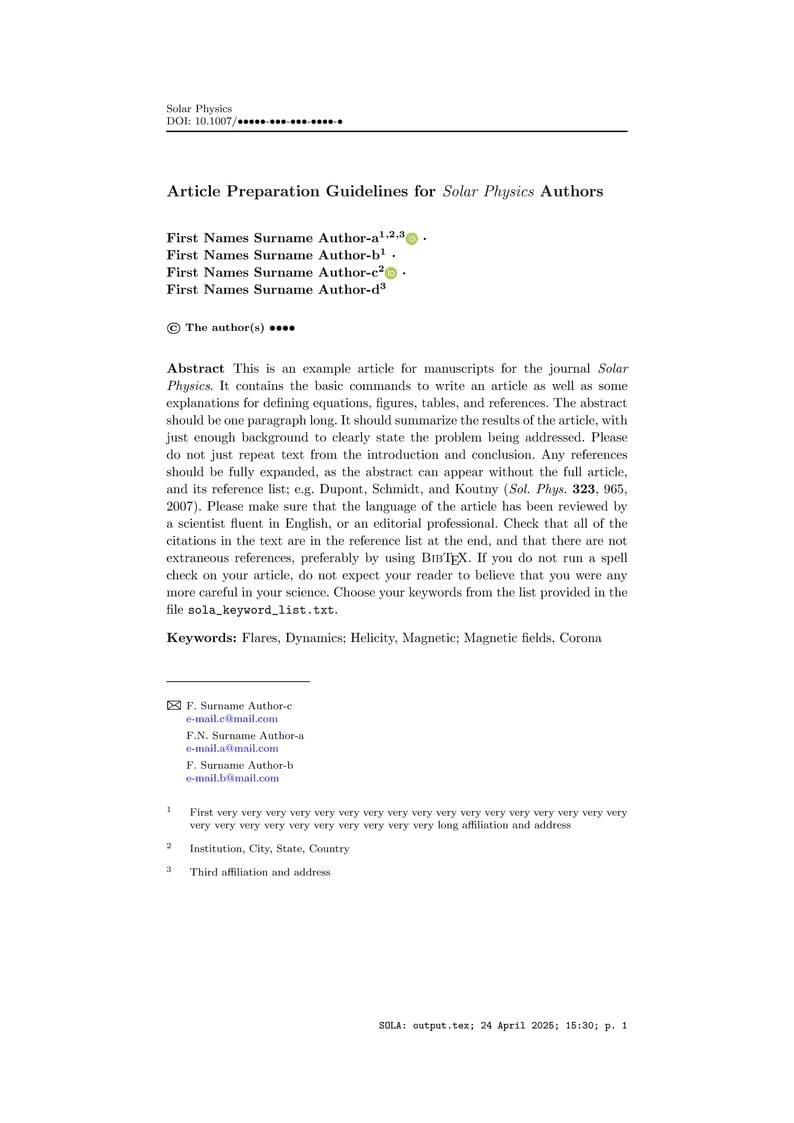
This is an example paper for manuscripts for the journal Solar Physics, downloaded from the journal's support page for LaTeX authors. It contains the basic commands to write an article as well as some explanations for defining equations, figures, tables, and references.
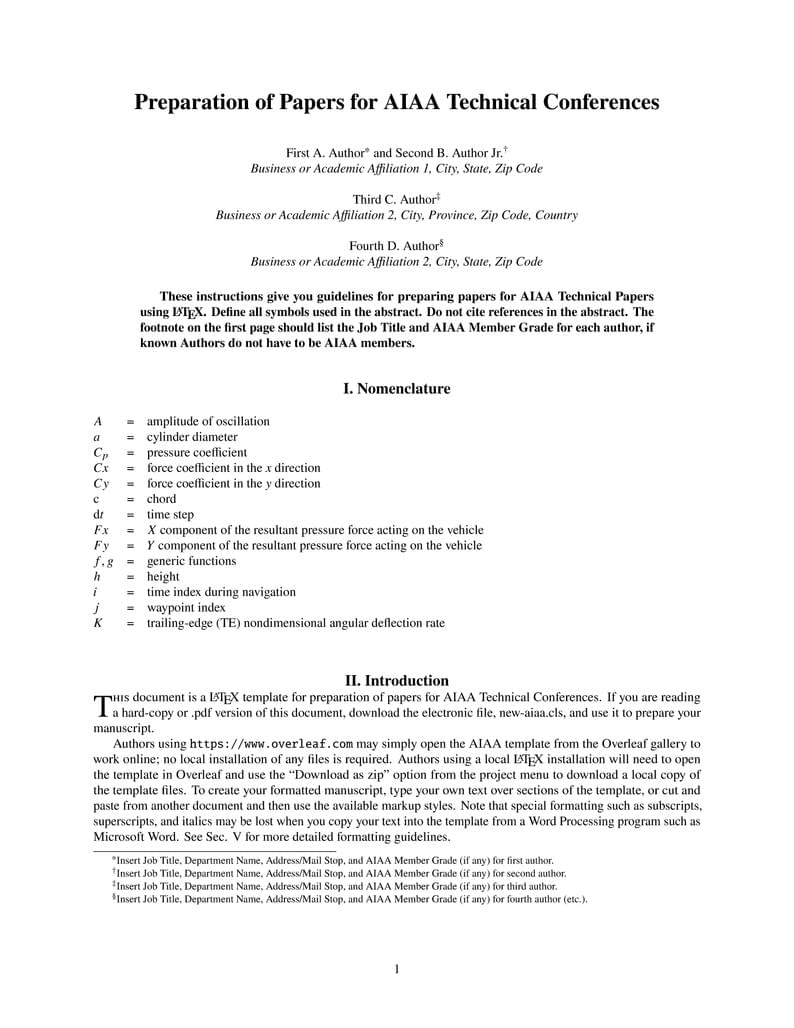
These instructions provide guidelines for preparing papers for AIAA Technical Conferences using LaTeX. AIAA is the catalyst for inspired idea exchange and solutions, a convener of the most original perspectives, and curator of essential research information. For the past 50 years, individuals and teams from around the globe have presented their latest research to their peers at AIAA conferences. To begin writing online (in your browser), simply click the Open as Template button, above. Additional guidelines for preparing your submission are included within the template itself. If you'd like to download any of the template files including the .cls file, please click "Open as template" above, then download the template “Source” zip file from the menu. For a list of AIAA forums and other events currently accepting abstracts, visit the AIAA events listing page. If you're new to Overleaf and LaTeX, check out our free introductory course for help getting started.
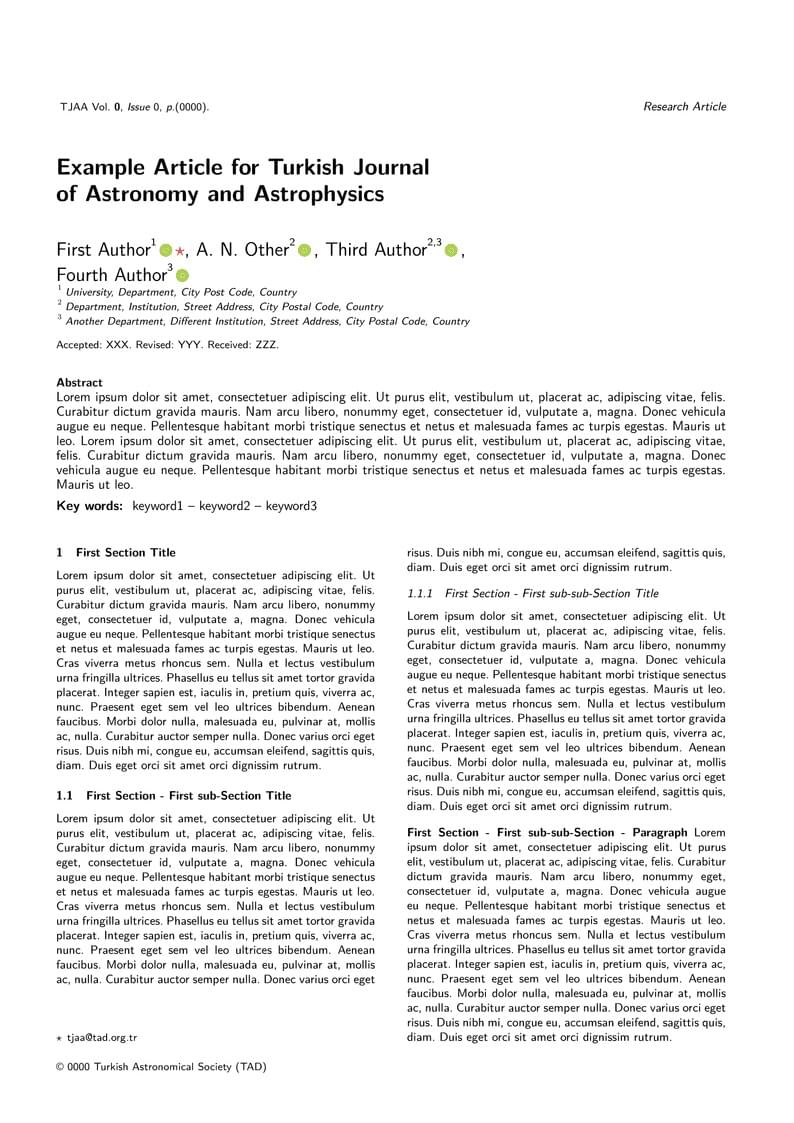
Official template for TJAA - v3.0
\begin
Discover why over 20 million people worldwide trust Overleaf with their work.